What are the compliance rates with IV smart pump drug libraries

Our findings support that there are differences in IV smart pump compliance both within and between hospital systems and that IV smart pump type and the number of drug library profiles may be influencing factors” Giuliano et al (2018). Reference: Background: Although intravenous (IV) smart pumps with built-in dose-error reduction systems (DERS) can reduce IV […]
Transjugular retrieval of a knotted peripherally inserted central venous catheter

Knotting of intravascular catheters has been well described, and all such cases documented in the literature have occurred during catheter insertion” Zhou et al (2018). Abstract: Knotting of intravascular catheters has been well described, and all such cases documented in the literature have occurred during catheter insertion. Knot formation has not been reported during the […]
Repair or replace fractured pediatric central venous catheters
Central venous catheter (CVC) fracture is a common complication. The aim of this study is to examine risk factors resulting in CVC fracture and compare outcomes of children undergoing CVC repair versus replacement” Zens et al (2018). Abstract: INTRODUCTION: Central venous catheter (CVC) fracture is a common complication. The aim of this study is to […]
Is fluoroscopy necessary for central venous port placement?

The aim of this study is to determine whether intraoperative fluoroscopy (IF) is required to confirm the correct position of the catheter tip in children” Dore et al (2018). Abstract: INTRODUCTION: Central venous port (CVP) placement is traditionally performed under fluoroscopy guidance. However, efforts for radiation dose reduction in children have allowed the introduction of […]
Association of blood culture frequency and CLABSI rates?
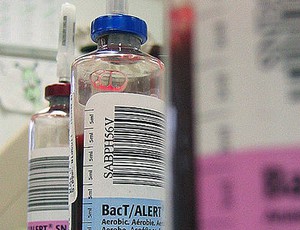
Aim of the study was to analyze the frequency of BCs, the rate of central line-associated bloodstream infections (CLABSIs) and to study the association between both parameters on intensive care units in Germany over time” Salm et al (2018). Abstract: Background: Blood cultures (BCs) are the gold standard for diagnosing sepsis and are prerequisite for […]
Performance of peripheral intravenous catheterization in relation to work experience
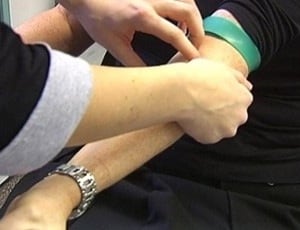
The aim of this study was to explore general registered nurses’ (RNs) assessments of problems associated with difficult peripheral intravenous catheterization (PIVC) depending on their years of working experience, that is, those who had worked 3 years or less and those who had worked more than 3 years” Sandström and Forsberg (2018). Abstract: The aim […]
How to use topical anesthetics and distraction for peripheral IV catheter placement

The purpose of this article is to educate nursing staff of the importance of using topical analgesics such as LMX4 and EMLA, needle free lidocaine injections, as well as different methods of distraction to successfully place a peripheral intravenous catheter in a pediatric patient on first attempt” Martin (2018). Abstract: Placing a peripheral intravenous catheter […]
Review of central venous cannulation and Seldinger technique

Central venous cannulation using the basic principles of the Seldinger technique is a core skill for anaesthetists and critical care doctors in situations where intravenous access is difficult or multiple infusions are required” Williamson and Cattlin (2018). Abstract: Central venous cannulation using the basic principles of the Seldinger technique is a core skill for anaesthetists […]
Microcatheter access port for intra-arterial therapy of liver cancer

To develop an implantable port in which a microcatheter can be inserted for a combination therapy of repeated transarterial chemoembolization (TACE) and hepatic arterial infusion chemotherapy (HAIC) for advanced liver cancer” Fukuoka et al (2018). Abstract: PURPOSE: To develop an implantable port in which a microcatheter can be inserted for a combination therapy of repeated […]
Improving access to appropriate post-exposure doxycycline for Lyme disease prophylaxis
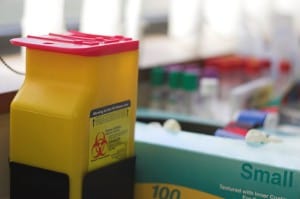
We challenge restrictions to the appropriate and timely provision of therapy for Lyme disease and encourage the use of community pharmacists in managing these patients” Dering-Anderson and Adams (2018). Abstract: The transmission of Borrelia burgdorferi to humans through tick bites results in Lyme disease. Appropriate therapy for Lyme disease is antibacterial drugs, most often doxycycline. […]
Predictors of tunneled hemodialysis catheter infection or dysfunction

To assess the ability of various clinical factors to predict infection or dysfunction of tunneled hemodialysis catheters” Coker et al (2018). Abstract: PURPOSE: To assess the ability of various clinical factors to predict infection or dysfunction of tunneled hemodialysis catheters. METHODS: A retrospective review of all adult patients who had a tunneled hemodialysis catheter placed […]
What are the three most common phlebotomy errors?
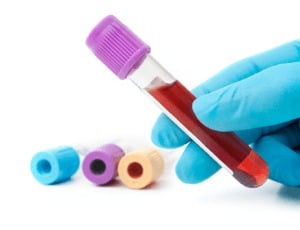
Our objective was to determine the compliance rate of the different steps of the phlebotomy procedure and propose corrective actions” Merzougui et al (2018). Abstract: INTRODUCTION: Phlebotomy is taking a venous blood sample for a medical biology analysis. If the taking of a sample is poorly executed, the results for this sample may be inaccurate […]
Effects of serial phlebotomy on vascular endothelial function

Four serial phlebotomy procedures over six months with or without intravenous iron supplementation did not alter vascular endothelial function in the brachial artery when compared with sham phlebotomy” Jelani et al (2018). Abstract: INTRODUCTION: Blood donation has been proposed as a potential therapy to reduce risk of cardiovascular disease, but the effects of phlebotomy on […]
Phlebotomy tube interference with nuclear magnetic resonance (NMR) lipoprotein subclass analysis

Lipoprotein subclass analysis by nuclear magnetic resonance (NMR) can be used in risk assessment of atherosclerotic cardiovascular disease (ASCVD). There is little information in the literature regarding phlebotomy tube interferences with NMR testing” Needham et al (2018). Abstract: BACKGROUND: Lipoprotein subclass analysis by nuclear magnetic resonance (NMR) can be used in risk assessment of atherosclerotic […]
Hand hygiene compliance factors among infection control nurses

We assessed the current status of knowledge, perception, attitude, and role model regarding hand hygiene (HH) among infection control nurses (ICNs) and identified the factors influencing these variables” Oh (2018). Abstract: Background: We assessed the current status of knowledge, perception, attitude, and role model regarding hand hygiene (HH) among infection control nurses (ICNs) and identified […]
Patient acceptance of outpatient parenteral antibiotic therapy

Outpatient parenteral antibiotic therapy (OPAT) can facilitate early discharge; however, not all offered OPAT can accept. We assessed factors associated with acceptance of OPAT in a large Asian tertiary hospital cohort” Wee et al (2018). Abstract: Outpatient parenteral antibiotic therapy (OPAT) can facilitate early discharge; however, not all offered OPAT can accept. We assessed factors […]
Quality of outpatient parenteral antimicrobial therapy

The aim of this qualitative study is to explore the patients’ perspective on high-quality care, and to explore what patient-centred care means to adult OPAT patients” Berrevoets et al (2018). Abstract: OBJECTIVES: Current outpatient parenteral antimicrobial therapy (OPAT) guidelines recommend delivering patient-centred care. However, little is known about what patients define as good quality of […]
Evaluation of domiciliary iloprost through elastomeric pump
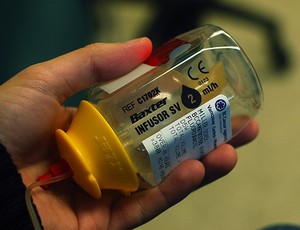
We describe our protocol and report our experience with 12 patients, for a total of 25 infusions, who have received domiciliary iloprost through elastomeric pump” Duarte et al (2018). Abstract: Raynaud’s phenomenon (RP) and digital ulcers (DU) are the main clinical features of vasculopathy that occurs in several systemic rheumatic diseases. Intravenous iloprost is recommended […]
Clinical presentation and therapeutic management of venous thrombosis in young children

Young children with VTE most commonly have CVC-VTE and approximately one-tenth and one-fourth received no or only short durations of anticoagulant therapy, respectively” Chan et al (2018). Abstract: BACKGROUND: Venous thromboembolism (VTE) in young children is not well documented. METHODS: Clinicians from 12 institutions retrospectively evaluated the presentation, therapeutic management, and outcome of VTE in […]
Introduction of antiseptic octenidine-based bathing in the ICU

The implementation of universal octenidine-based bathing combined with a standardised washing regime led to a significant reduction of nosocomial VRE” Messler et al (2018). Abstract: Background: Vancomycin-resistant Enterococcus faecium (VRE) is emerging in German intensive care units (ICUs). On a 32 bed surgical ICU at a university hospital increasing numbers of nosocomial cases occurred despite […]
Persistent left superior vena cava with absent right superior vena cava

We present two cases of PLSVC with an absent RSVC, describe how to recognize and confirm this diagnosis, and discuss its clinical relevance” Patel and Gupta (2018). Abstract: Persistent left superior vena cava (PLSVC) is the most common congenital abnormality of the thoracic systemic venous drainage; in fact, cardiology fellows in training are often quizzed […]
Implications of head turning on central venous access
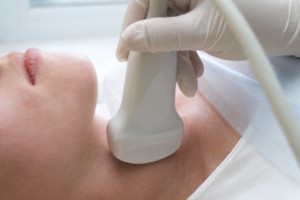
The goal of this study was to examine the anatomical relationships of the IJV and CA as a function of the degree of head rotation in order to minimize the risk for CA puncture” Merritt et al (2018). Abstract: CONTEXT: Previous studies have shown that safe venous cannulation is difficult when the internal jugular vein […]
Laterality of peripheral IV catheter and associated outcomes

Based on this, we conclude that laterality should not influence the decision regarding where to insert a PIVC at the upper extremity” Sommerstein et al 92018). Extract: “Our aim was to correlate the laterality of PIVCs placed in the upper extremity with the outcome rates of complications and patient satisfaction. We included 291 of 302 […]
Personalised approach to vascular access for pregnant dialysis patients
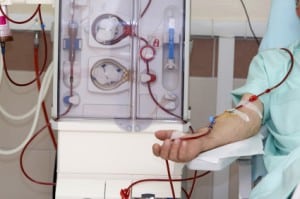
Pregnancy in dialysis patients is a rare but important event that challenges our knowledge and demands re-thinking many aspects of our practice, including vascular access” Piccoli et al (2018). Abstract: Pregnancy in dialysis patients is a rare but important event that challenges our knowledge and demands re-thinking many aspects of our practice, including vascular access. […]
History of the Swan Ganz pulmonary artery catheter

This article describes their lives and careers, the state of intensive care before and after their catheter was introduced, and the natural life cycle the PA catheter faced as new, less invasive technology arrived to replace it” Thakkar and Desai (2018). Abstract: Jeremy Swan and William Ganz developed their eponymous pulmonary artery (PA) catheter in […]
Patient experience of photopheresis using a peripherally inserted central catheter

“The use of peripherally inserted central venous catheters (PICCs) offers an alternative route of vascular access for this cohort of patients. Here we present a case report of a patient successfully treated with ECP following the insertion of a PICC line” Rushton et al (2018).
Peripheral portacath provides safe and convenient vascular access

This study shows that the use of peripheral PaC is safe. The feedback from patients and nursing staff supports the use of the peripheral PaC. We are exploring additional patient groups that might benefit from this device” Herd et al (2018). Abstract: INTRODUCTION: Adolescent patients with chronic conditions rely on permanent venous access for safe […]
Antisepsis in the handling of vascular access connections

Needleless connectors provide easy access points to the vascular system for the administration of fluids, avoiding the risk of accidental punctures and increasing safety in vascular access manipulation. Non-aseptic manipulation can favor contamination” Fernández Moreno and Píriz Marabaján (2018). Abstract: Needleless connectors provide easy access points to the vascular system for the administration of fluids, […]
Central line related complications in pediatric oncology patients

Central venous access device (CVAD)-related complications are associated with high morbidity rates. This study was performed to underline the importance of CVAD-complication prevention and treatment” van den Bosch, et al (2018). Abstract: BACKGROUND: Central venous access device (CVAD)-related complications are associated with high morbidity rates. This study was performed to underline the importance of CVAD-complication […]
Influence of vascular access devices upon therapeutic plasma exchange

The use of peripheral venous access is possible in most of TPE, for emergency and during maintenance therapy. Dialysis cannulae are good compromise between classic IV catheters and central venous catheters, as it allows high flow rates, are easy to insert and associated with few complications” Ritzenthaler et al (2018). Abstract: BACKGROUND: An efficient vascular […]

